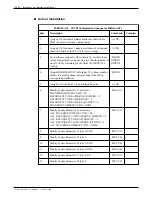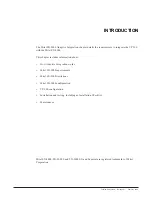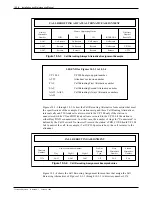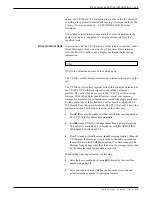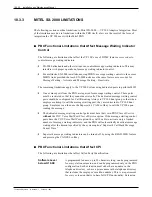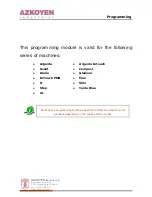
■
Mitel SX-2000 Call Coverage
The SX-2000 provides two options for specifying call coverage. Extensions may be assigned
Call Rerouting, which sets forwarding to various destinations depending on the status of the
extension and the source of the call. Call Rerouting is defined in the SX-2000 configuration and
cannot be changed by an individual station user. The SX-2000 also provides Station Call
Forwarding, allowing an individual to forward calls to another destination depending upon the
status of the station and the source of the call.
An answer point for either Station Call Rerouting or Call Forwarding is specified as an
SX-2000 directory number. A directory number may be a station extension, a speed call
number, a hunt group pilot number, or a Superset 4 answer point.
■
Station Call Forwarding
The SX-2000 provides a variety of Station Call Forwarding features to allow a station to
redirect its calls to another extension for coverage under different conditions. These
features can be activated or deactivated at any time from an extension for which they are
configured. The covering extension is specified when forwarding of any type is activated,
and forwarding may be set to different destinations under different conditions.
Using the SX-2000 Station Call Forwarding, a station can redirect calls to a specified
answer point under any of the following conditions:
•
Called extension is busy or in DND (Do Not Disturb), and the call source is internal.
•
Called extension is busy or in DND, and call source is external.
•
Called extension doesn’t answer, and the call source is internal.
•
Called extension doesn’t answer, and the call source is external.
•
Called extension always forwards all calls.
■
Call Rerouting
The SX-2000 Call Rerouting feature provides selective call coverage for one or more
extensions via designated Call Rerouting Alternatives. A Call Rerouting Alternative
determines under which conditions calls are rerouted to a specified answer point or to
normal rerouting. Normal rerouting routes the call to the system tone appropriate to the call
status, such as busy tone or reorder tone. There are three types of Call Rerouting
alternatives:
•
Call Rerouting First Alternatives
•
Call Rerouting Second Alternatives
•
Call Rerouting Always Alternatives
The SX-2000 provides a separate table for defining each type of Call Rerouting
Alternative.
A Call Rerouting First Alternative specifies the first alternate point to which a call is to be
rerouted if a call cannot be completed. Rerouting can be enabled or disabled independently
Toshiba VP Systems
Release 6.1
February, 1993
MITEL SX-2000 ADAPTIVE INTEGRATION
10.3-3
Summary of Contents for VP 300
Page 2: ......
Page 10: ......
Page 14: ......
Page 20: ...Toshiba VP Systems Release 7 1 July 1994 ...
Page 52: ...Toshiba VP Systems Release 6 1 February 1993 2 14 Installation and Maintenance Manual ...
Page 56: ...Toshiba VP Systems Release 7 1 July 1994 ...
Page 146: ......
Page 312: ...Toshiba VP Systems Release 7 1 July 1994 ...
Page 314: ......
Page 444: ......
Page 496: ......
Page 542: ......
Page 598: ...Toshiba VP Systems Release 6 1 February 1993 ...
Page 600: ...Toshiba VP Systems Release 6 1 February 1993 ...






